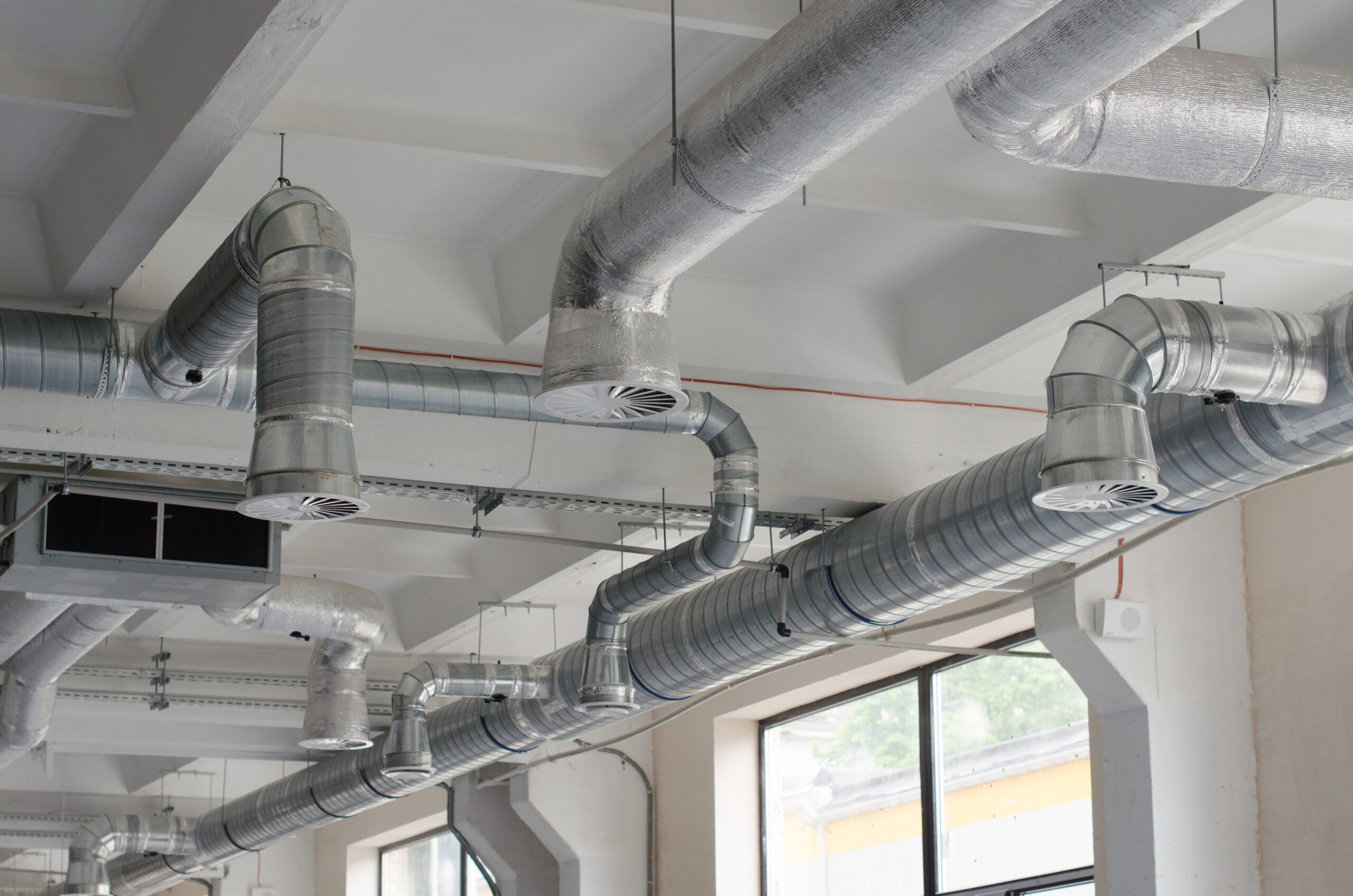The Role of Correct Ventilation in Ensuring Plumbing Systems
The Role of Correct Ventilation in Ensuring Plumbing Systems
Blog Article
The content directly below on the subject of What Is A Plumbing Vent & How Do They Work? is particularly interesting. Check it out for your own benefit and figure out what you think of it.

Appropriate air flow in pipes systems is usually forgotten, yet it is crucial for maintaining the capability and security of your home's pipes. Ventilation aids manage atmospheric pressure, avoid the buildup of harmful gases, and make certain the reliable removal of waste. In this guide, we will discover the significance of correct plumbing air flow, exactly how it functions, and the advantages it brings to your plumbing system.
How Air Flow Works in Pipes Solutions
Atmospheric Pressure Guideline
Proper ventilation keeps balanced atmospheric pressure within the plumbing system. When water streams via pipes, it displaces air. Without appropriate air flow, this displacement can produce adverse stress, causing reduce drains pipes or siphoning of water from traps, which can cause unpleasant smells to permeate into the home.
Stopping Drain Gas Build-up
One of one of the most essential functions of plumbing vents is to prevent sewer gases, such as methane and hydrogen sulfide, from accumulating within the home. These gases can posture severe health risks and are extremely flammable. Vent pipelines enable these gases to run away securely outdoors.
Helping in Waste Removal
Ventilation aids in the efficient elimination of wastewater by stopping airlocks in the water drainage system. When air can move openly through the vents, it allows water and waste to move smoothly via the pipelines, decreasing the risk of blockages and backups.
Benefits of Correct Ventilation
Boosted System Effectiveness
Properly aerated pipes systems operate a lot more successfully, with fewer blockages, faster draining, and less stress on the pipes. This performance prolongs the life expectancy of the plumbing system.
Improved Air Top Quality
By protecting against drain gases from entering your home, proper air flow adds to much better interior air high quality, making your living setting healthier and much more comfy.
Avoiding Water Damage
Adequate ventilation assists avoid water from being siphoned out of traps, which can lead to sewer gases getting in the home and creating water damage in time.
Steps to Make Certain Correct Ventilation
Consulting Pipes Codes
Constantly get in touch with regional plumbing codes when creating or customizing your pipes system. These codes supply the necessary standards for proper airing vent and guarantee your system satisfies safety and security standards.
Regular Evaluation and Maintenance
Regular inspections can assist recognize possible air flow issues prior to they come to be major issues. Maintenance tasks, such as cleaning vent pipes and looking for blockages, are essential for keeping the system in good working order.
Professional Installment
For new installments or significant adjustments, it's smart to work with an expert plumbing. They have the proficiency to ensure the ventilation system is properly made and installed according to code.
Understanding Ventilation in Plumbing
Air flow in pipes describes the network of pipelines that permit air to move with the water drainage system. These vents offer numerous functions, including controling air pressure within the pipelines, stopping sewage system gases from going into the home, and assisting in the smooth flow of wastewater.
Kinds Of Plumbing Vents
Main Stack Vent
The main stack vent, also referred to as the air vent pile, is the primary air vent in a pipes system. It prolongs from the major drainpipe line up through the roofing system, permitting gases to escape and fresh air to get in the system.
Branch Vent
Branch vents connect to the main pile vent and offer individual components, such as sinks, bathrooms, and showers. These vents make sure that each fixture has sufficient air flow to work effectively.
Air Admission Valve (AAV).
An Air Admission Valve (AAV) is a one-way shutoff that permits air to get in the pipes system without the requirement for a conventional air vent pipe expanding through the roofing system. AAVs are generally made use of in remodellings or locations where mounting a conventional vent is not practical.
Indicators of Poor Air Flow in Plumbing.
Slow Draining Fixtures.
If your sinks, tubs, or bathrooms are draining pipes gradually, maybe an indicator of poor air flow. Poor air circulation can create a vacuum impact, making it tough for water to drain appropriately.
Gurgling Seems.
Gurgling noises coming from drains are frequently a result of air being sucked via water catches as a result of negative stress in the pipes. This is a clear indicator of inadequate ventilation.
Unpleasant Odors.
Drain smells inside your home are a red flag that your pipes system is not properly aerated. This can mean that drain gases are not being properly aired vent outside, bring about potentially dangerous conditions.
Common Ventilation Errors.
Insufficient Vent Sizing.
Making use of undersized vent pipes can bring about poor air flow and pressure imbalances in the system. It's essential to use vents that meet the details demands of your pipes system.
Improper Vent Placement.
Putting vents too much from the fixtures they offer can decrease their performance. Appropriate positioning makes sure that air can move easily and successfully through the system.
Ignoring Code Demands.
Building codes supply specific guidelines for plumbing air flow. Disregarding these codes can lead to a system that stops working to work correctly and may cause pricey repair work or carcinogen.
Verdict.
Appropriate air flow is a crucial part of any pipes system, guaranteeing that it works effectively and safely. By recognizing the significance of ventilation, identifying the indications of poor air flow, and taking steps to maintain your system, you can prevent expensive concerns and protect your home's air quality.
4 Things You Should Know About Your Plumbing Vents
What Plumbing Vents Are
Also called a vent stack, a plumbing vent is a vertical pipe attached to your drain line that runs through your roof. The plumbing vent pipe, or plumbing air vent, removes gas and odors from your plumbing system and allows fresh air to enter the pipes, helping the water to flow out of the drain pipes.
What Plumbing Vents Do
Plumbing vents have two basic functions. One of which is to allow unpleasant smelling wastewater and sewer gasses to escape your plumbing system instead of entering your home. Plumbing vent pipes are typically located on roofs, away from windows, to ensure the fumes exit the home completely.
The other function of the plumbing vent is to move fresh air into your plumbing system. This helps move water through every plumbing fixture in your house, like toilets and sink drains. Think of the way in which you need to let a little air into the bottle as you pour soda in order to make the drink flow smoothly.
Different Types of Plumbing Vents
True vent: This is the most common vent option. In simplest terms, a true vent is a vertical pipe attached to your drain line that exits through the roof. They often function as the main vent that other fixtures can connect to. Re-vent pipe or auxiliary vent: Attached to the drain line near specific plumbing fixtures, re-vent pipes run up and over to connect to the main vent. Common vent: Two plumbing fixtures installed on opposite sides of a wall are typically tied into the vent stack using something known as a sanitary cross. Wet vent: This venting option operates as a drain pipe and a vent at the same time. Wet vent drainage systems drain water from one fixture while venting the air from another. Although they’ve been used for over 100 years, wet vent systems have only recently been added to the plumbing code in many areas. If you’re planning on installing one in a bathroom remodel, make sure you check your local code prior to construction. Loop vent: For free-standing fixtures like kitchen island sinks, loop vents are ideal. These vent pipes run under the floor, rise from the P-trap, and create a loop inside the cabinet sink. Air admittance valve: An AAV is a one-way mechanical valve typically installed at the site of the plumbing fixture. AAVs allow venting to occur without having to tie into a larger venting system. They’re ideal for venting fixtures where you aren’t able to easily connect to an existing vent system. Common Plumbing Vent Issues
Although vent pipes typically don’t have water flowing through them, they’re still subject to many typical plumbing issues. For example, clogs are one of the most common problems associated with sewer vent pipes. If your vent pipe gets clogged, all of your plumbing fixtures tied into the vent stack will be affected.
A sink with a slow drain that bubbles and gurgles or a strong sewage smell around your toilet are both indicators that your toilet vent pipe is clogged. Because most vent pipes exit through the roof, old leaves, twigs or even a bird’s nest could be clogging the pipe.
Clogs in your vent pipe system cause a buildup of negative pressure, meaning that water won’t be able to flow out of your home very well. It’s similar to putting your finger over the opening of a straw to trap water inside. When you remove your finger, the water is able to flow out of the straw.
If you suspect you have any blockage in your vent, make sure you have a professional come examine the situation. Left unchecked, a blocked air vent can lead to other costly repairs, like leaks and sediment buildup.
Under Pressure
Pipe vents are essential aspects of a home’s plumbing system. Owning a home means learning about all sorts of things you never put much thought into before. But by understanding as much as you can about the important systems of your home, you can keep those budgets intact and those anxiety levels low.
https://www.homeserve.com/en-us/blog/home-improvement/plumbing-vents/

I'm very fascinated by What Are Plumbing Vents and Why Are They Important? and I really hope you liked our piece. If you enjoyed our post kindly don't forget to pass it around. We thank you for reading our article about Why Plumbing Air Vents Are Important.
Schedule A Service Report this page